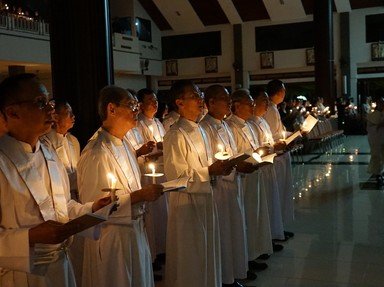Quiz Answer Key and Fun Facts
1. The first monks appeared shortly after Rome made Christianity the official religion of their Empire. Men fled to the deserts fearing the corruption that the State-sponsored religion would bring. Who is credited as being an early and powerful leader of these spiritual seekers?
2. What early Rule for monks was written in the 6th century and has been the most significant guide for Roman Catholic monks up to this day?
3. The word monk comes from the Greek word "monachos" meaning unique or solitary.
4. How are cenobites and eremites different?
5. The Cistercians were founded at the very end of the 11th century as a monastic reform. The founders of the Cistercians hoped to return to living by the Rule Of St. Benedict in simplicity and poverty. What man joined the order in 1113 and soon became the strongest leader that the Cistercians have ever had?
6. In 1084 St. Bruno started a quiet but highly respected monastic order that survives to this day. This order is known as what?
7. The Trappists, which is a popular nickname for followers of a Cistercian reform that occurred in 1664 at the La Trappe Abbey under Abbot de Rance, are well known for having a very strict way of life. Do the Trappists take a vow of silence?
8. Do the Carthusians follow the Rule of St. Benedict?
9. When was the Roman Catholic Order of St. Benedict formed as an internationally united order?
10. What twentieth-century American monk helped to bring a positive perspective to Roman Catholic monasticism through his prolific spiritual writings?
Source: Author
star_gazer
This quiz was reviewed by FunTrivia editor
CellarDoor before going online.
Any errors found in FunTrivia content are routinely corrected through our feedback system.
